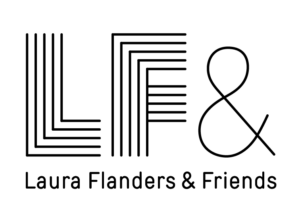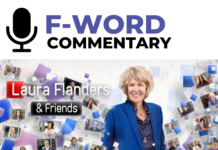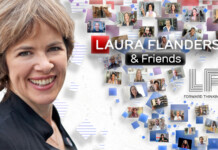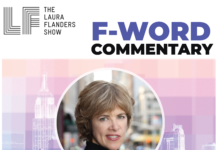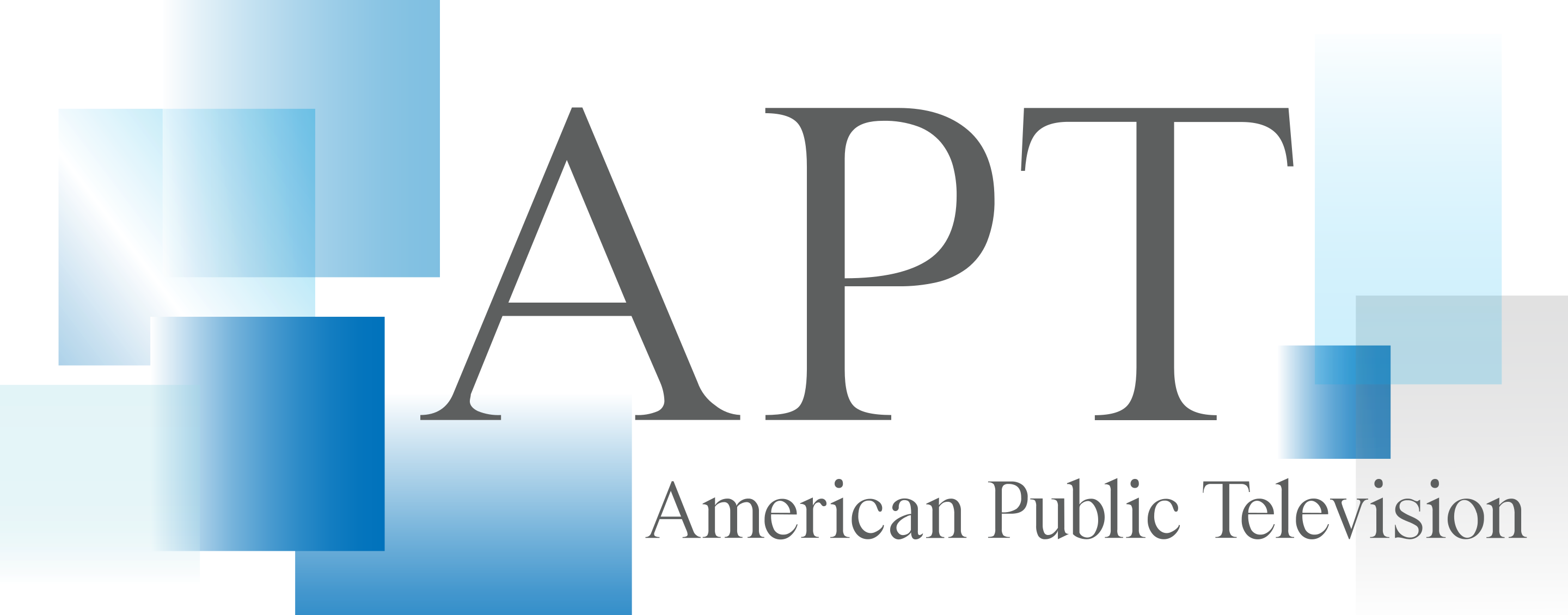South Australia has become a global leader in green energy transition, getting off fossil fuels faster, and to a greater extent than almost any other country. How did they do it, and what can we learn from them? In this report for Climate Week, Laura goes Down Under with her partner, Elizabeth Streb, and her extreme dance company, and discovers how the region’s culture and its many world-class festivals have helped pave the way for transformation. Helping to unpack it all is a range of impressive guests, including Susan Close, deputy premier of South Australia; Anoté Tong, the former President of the Micronesian island, the Republic of Kiribati; Ruth Mackenzie, former Artistic Director of the Adelaide Festival, now Program Director of Arts, Culture and Creative Industries Policy within the South Australia state government; Rob Brookman, the co-founder of WOMADelaide, the capital’s premier outdoor festival; MacArthur “Genius” Award winner, Elizabeth Streb and the action heroes of her company STREB — and a WHALE. As you’ll hear, it’s taken politics, policy, science and culture to shift public practice in this extreme-weather-vulnerable area. Over the last decade, South Australia has faced massive storms, brush fires, and extreme heat that have put people, wildlife, and even the festival at risk. Now South Australia is leading the way and using art to help people envision a green future, but they can’t solve the climate crisis alone. In this Climate Week special, we ask, how can the rest of the world follow suit?
“I’d say that WOMADelaide is creating a tiny version of the planet as you would like it to be . . . If you’ve listened to music from Iraq or if you’ve listened to music from Vietnam, or if you’ve listened to music from Palestine and Israel, it’s more difficult to say those people, we don’t understand them, so we can’t deal with who they are.” – Rob Brookman
“We don’t get exempted from climate change because we’ve got a green electricity grid . . . It is globally caused and has to be globally solved. So part of what we do is not to boast about what we’ve done, but to hope that our leadership will show others that you too can do this. Come and learn from us.” – Susan Close, Deputy Premier, South Australia
“We’ve got the arguments, we can tell you the facts, but people don’t feel it . . . reach into your head, into your heart, they dig in and then they motivate you to action. And of course if you can also motivate the artist in every single child in South Australia, then we really have a force to change the world.” – Ruth Mackenzie
“For the festival to go to young people and be like, ‘Hey, we want to hear from you. We want you to be a part of this. What works do you want to see? What works do you want to make and what do you want them to be about?’, is something that doesn’t happen very often . . . Hopefully it’ll mean we can get more people involved.” – Caitlin Moore, Artist, Activist
“The science doesn’t seem to be making an impact no matter how precise. Maybe the hard facts of science do not ring a bell as much as the emotional language of the arts . . . Maybe the arts can put it in a way that it touches the hearts of your political leadership.” – President Anoté Tong
LAURA FLANDERS & FRIENDS
South Australia’s Green Revolution: How Art & Policy Catalyze Climate Action
LAURA FLANDERS – When I first found out that my partner, Elizabeth Streb and her Extreme Action Company, STREB, had been invited to participate in the world Class Adelaide Festival here in Adelaide, South Australia, I thought it would be kind of fun to come, but as I heard more about this festival and this place, I realized it actually had a really important story to tell. It turns out, South Australia, which is a kind of state of Australia, is a world leader when it comes to green energy transition. And they’ve pulled off this extraordinary feat of going from just about 1% sustainable energy to over 70% of their energy supply coming from renewables through a mixture of politics, policy, practice, and cultural change, in which Adelaide’s festivals have played a big part. In 2021, the World Economic Forum prepared this video for their conference in Davos, showcasing how South Australia had become a green energy dynamo in just 15 years. The previous October, South Australia had been 100% powered by wind and solar for an hour. But back in 2006, all of its energy was still coming from fossil fuels. The forum didn’t talk about the role of culture or the arts, but in addition to their green energy transition, South Australians are rightly proud of their festivals. Among them, the Adelaide Festival and WOMADelaide, which takes place outside in Botanic Park. Botanic Park attracts visitors from around the world. It’s also home to tens of thousands of bats. Enormous, gray-headed flying foxes or mega bats, they’re native to Australia and hanging in massive numbers, flapping their meter long wings in the eucalyptus trees. The bats were hard to ignore. They’ve been displaced because of climate change, and this March they were suffering in the extreme heat. Feel that, I mean, that’s not possible.
CAMERAMAN: No, good luck to them.
LAURA FLANDERS – That’s insane. They spray them, but they don’t like being sprayed, so then they go higher and then they get hotter. Hope is they’ll wise up. That’s another good view of the bats. Not unlike the bats, the STREB company is famous for its interest in falling and flight. It is high-impact, high-risk work. It also involves big metal machines, which in 2024s record breaking heat in Australia got very hot. You got here a few days ago. What’d you discover?
ELIZABETH STREB – Well, we discovered that once the machines were put up and it was this hot, all of the pure metal machineries and the trampolines and the mats were just cooking, they were cooking, and the dancers would bravely hit them, touch them. They got all of these blisters on their hands. Does anybody want us to show us your hands?
CAMERAMAN: Oh, you got it bad.
ELIZABETH STREB – And I think that we weren’t quite prepared for that, but they braved through it. This is not our first time performing outside, but it has never, I’m going to hear and say to you, it’s never been this hot.
LAURA FLANDERS – Held on the traditional lands of the Kaurna people, WOMADelaide celebrates world music, art and dance. Rob Brookman was one of the co-founders of the WOMADelaide Festival in 1992.
ROB BROOKMAN – I was solving a practical problem, which was I just loved so much music from different parts of the world, and there were this whole bunch of artists that I wanted to invite. In a way, I’d say that WOMADelaide in a meta sense, is creating a tiny version of the planet as you would like it to be. So from my point of view, that kind of planet puts culture first and it puts environment first, it puts equality first, and it puts a generosity of spirit first. If you get people listening to other people’s cultures and seeing other people’s cultures, then it’s a lot harder to make them the other. If you’ve listened to music from Iraq or if you’ve listened to music from Vietnam or you listen to music from, you know, let’s say Palestine and Israel, it’s more difficult to say, “Those people, we don’t understand them, so, you know, we can’t deal with who they are.” So, really that idea of creating understanding through culture was at its absolute core. But ultimately I just wanted people to be able to walk into the park and go, “I feel free and safe, and I feel open to explore.” And I would call world music more a way of listening, you know, it’s kind of crazy to talk about world music as being 55 different things. It’s a way of opening up your ears and listening to different rhythms, different harmonies, and accepting them.
LAURA FLANDERS – 30 years later, Adelaide’s festivals are world renowned, but the climate’s gotten hotter. In March 2024, temperatures topped 106 degrees Fahrenheit in fall, an off season heat wave in the Southern Hemisphere. All across the region events had to be canceled.
ROB BROOKMAN – You know, in our country, people have now been provided with very first hand evidence of what climate change means and what it looks like into the future. Because while for a long time, you know, we were, we were the frog that was boiling, we didn’t really notice what was going on. But suddenly, this country which is regularly ravaged by bush fires and storms and a whole lot of other wild weather events, but no one could imagine that what’s happened over the last 10 years is any kind of normal. It is unfortunately a new normal, and each year we find that the extremity of those weather events is increased
LAURA FLANDERS – So what actions did the state take in the face of climate change? The World Economic Forum singled out these moves. South Australia fast tracked wind farms in rural areas. It offered residents a $3,000 subsidy for a solar energy battery. Now 40% of homes have solar panels. It closed its largest coal-fired power station and supported workers back into employment funding a solar powered greenhouse that employs 220 people. It also built the world’s largest grid scale battery storage system. And the government supported green power plants with big contracts. “With these measures,” declared the World Economic Forum, “South Australia smashed its green energy goals.” Now South Australia aims to produce 500% of its energy from renewables by 2050 and sell the extra to neighboring states. Meanwhile, in the rest of the country, coal, oil and gas still dominate the energy landscape. Susan Close, Deputy Premier of South Australia oversees the green energy transition today.
SUSAN CLOSE – About 15 years ago, we were at 1% of our electricity production coming from renewable electricity, and now it’s at nearly 75% and about to hit a 100%. And that was an act of will, this isn’t one of those things that happens because you hope that maybe people will choose to do. The government of the day decided that we had precious little coal and we now have no functional coal. That we are a state that needs electricity, that needs to recognize the imperative of climate change and that we would change the planning laws and change the investment opportunities in order to create this leadership role that we’ve now taken. We also have are blessed with the natural resources of wind and sun. We are one of the very few places in the world that has so much wind and sun at the same time, which means that we are really able to take advantage of those forms of electricity production.
REPORTER: I’ve never seen it like that before. The restaurants are closed, it is empty. The traffic has stopped, the lights are out.
LAURA FLANDERS – Transition hasn’t always been easy. In 2016, after South Australia had started the transition away from coal, the state experienced a series of blackouts due to a combination of factors including high electricity demand, storms, and issues with the state’s new power infrastructure. In response, with the help of Tesla, the state installed a massive battery storage system that’s capable of storing excess energy produced by wind and solar and releasing it when it’s needed. Now the state is looking into developing green hydrogen power.
SUSAN CLOSE – It’s very easy for us to forget that now because South Australians are so proud of what we’ve done. But at the time, there was pushback both from people who felt that it would be unstable, and of course, there is a challenge with the stability of the grid when you have intermittent sources like that. But also, of course, the people who at the time thought that wind farms were bad for their health and that it would alienate the landscape, and so on. That’s largely disappeared. Culture matters so much in how we approach climate change and the biodiversity crisis. We will only do it through harnessing technology because culturally we value addressing climate change and we value nature. This city, this state is known as the festival state, for a small population, and one that was really founded on an industrial base. We are also extremely arty and extremely cultural, and we absolutely revel in March in having our festival, our Fringe, Writer’s Week, WOMAD, which is the festival of Music and Dance. And people just come out and celebrate what it is to be Australian, South Australian, and to be human. And what you find increasingly in those various festival forums is that people are asking the questions about how we address the future. How do we do this collectively? How do we celebrate diversity and therefore make us more unified? And how do we absolutely recognize that there is an existential threat to our way of life represented by climate change and biodiversity crisis, and that we can deal with it if we choose to. So, art isn’t there just to solve our problems, art is there to make us feel larger and to celebrate, and demonstrate joy. But I’ve noticed how much of art is really turning to those big questions and asking them in a variety of different ways.
LAURA FLANDERS – Ruth Mackenzie was artistic director of the 2024 Adelaide Festival, which featured world-class companies in theater, opera, music and dance, as well as a free literary festival and a public art show. One Saturday morning, Ruth asked me to take a short tram ride to meet her at the beach. There, we encountered a sad surprise. I mean, I’m horrified. What are we looking at?
BART VAN PEEL – It’s a young adult, well, young adult or adolescent sperm whale. What we know now is, yeah, it’s been found very early in the morning in the surf. There was a big logistic operation getting it on the beach. They did well, I mean, thanks for the fire department. They’ve done an incredible job getting it here. It’s very rare to have a sperm whale this size in this time of the year here. First of all, one of the factors that is always playing a role is climate change, we see that all marine populations are affected by it. Climate change is also causing the oceans to get more acid. So there is yeah, changes food patterns, and these migration patterns of sperms whales have been going on for thousands of years. So when they change, it’s normal that more and more and more get into trouble, you know, get disoriented. Yeah, climate change is definitely one of the things that puts pressure on whale populations.
LAURA FLANDERS – How have you seen people react?
BART VAN PEEL – Well, I think a lot of curiosity. They want to know what it is, why it’s here, and they want to know. There’s also a lot of empathy towards, of course, this yeah, beast that tragically ended, and also just amazement, people can’t believe it. And the gum is also just like in humans, a very good indication of food patterns. Yeah, we know where it’s from, where it has been feeding. So, we will get those results pretty quickly. So, any more questions? You’re good? Thank you so much.
LAURA FLANDERS – Bart Van Peel is not in fact a marine biologist. He’s a Belgian performance artist whom Mackenzie had invited to participate in this year’s festival, along with his troop, the Captain Boomer Collective.
RUTH MACKENZIE – And what we’ve got behind us is an incredible piece of unforgettable art, and art gives you a memory, it gives you a motive to change, to think, but above all, it surprises you. It gets into your blood, you’ll never forget what you see here. And what you see here seems to be, tragically, a whale that has beached and died, with some scientists who are trying to deal with it, who are trying to dispose it. And if you go up, you’ll still believe it’s a whale, a real whale, and you’ll still believe those are real scientists. And in fact, you’ll be part of the performance because you’ll be reflecting your shock, your grief. You’ll be asking questions, “How did that whale get beached? What’s happened that makes these whales lose their way and end up dead on a beach?” And then at some point you’ll realize that you are, in fact, an actor in a three day free theater performance by an incredible theater company from Belgium, who have mastered the way in which art can surprise, inspire, and educate.
LAURA FLANDERS – Warmer temperatures, pollution and climate change aren’t only affecting life for bats and performers and whales, rising tides are also threatening to flood fragile Pacific Island nations. And no group is affected more than the Pacific’s First Nation or Indigenous people, whose homes and whose cultures are on the front lines.
ANOTE TONG – I’m actually seeing the waves coming in on my back porch. They come through the door. I lock the door, but it comes underneath. And so, when the tide goes out, we have to sweep it all out. And that’s been happening more frequently, and more severely.
LAURA FLANDERS – This spring’s festivals in Adelaide included panel discussions like this one with Islanders, including Anoté Tong, who was former president of the Republic of Kiribati, a Micronesian island in the middle of the Pacific Ocean that is expected to be the first country to lose all its land to climate change. In June, 2008, President Tong was already saying that his country had reached the point of no return and his people would soon have to move.
ANOTE TONG – I’ve gone out of ways to convey this message, so perhaps you can help me, because I keep telling the story, but people keep doing what it is that they keep doing, including your own government.
LAURA FLANDERS – The Adelaide Festival is one of the first festivals in the world to be certified net zero, meaning that through reducing its consumption and investing elsewhere, it’s brought its net carbon impact to zero, but that’s not enough. Back in Adelaide, Ruth Mackenzie was also responsible for a public art show called Create4Adelaide, which invited local young people to submit art related to climate.
RUTH MACKENZIE – So, here we are in Create4Adelaide, which of course is our culturally democratic participative project where young people have set the agenda, created their own artworks, and curated the exhibition themselves. Working with these young people and with activists, they all explain that we have to do better than net zero. It’s too late for net zero now, we have to get positive and contribute. We’ve got six years before the first big deadline in 2030, we have to move faster. And also, I think that actually both the young people and the participants in this project, but our audience as well, they want to do more. And if you can make it simple and if you can make it real and with the power of artists, engage everyone emotionally, then I think we can invest in saving the biodiversity that is here all around us in South Australia.
CAITLIN MOORE – We got over like 800 artworks from people coming in, dropping in.
LAURA FLANDERS – Caitlin Moore was the director of Create4Adelaide.
CAITLIN MOORE – So, Create4Adelaide has been a year long participatory project that was started off by Sabir in Glasgow around Create4Glasgow in the COP21, where they realized that there was a lot of climate leaders in Glasgow who weren’t doing anything to involve the people in Glasgow around climate change, particularly young people. So they created that project. And then when Ruth Mackenzie became the artistic director of Adelaide Festival, she brought that with her here. And that’s meant that we’ve spent the last 12 months getting young people to tell us what they care about climate change and make artworks about it. It’s been a lot of workshops, a lot of artists and schools, a lot of excellent schools taking on the information that we’ve given them and making their own works. There’s been individuals like Jade, who made this painting behind me, making work by herself, and then submitting it to an open call, which then got voted on, and then it’s let into this exhibition that we’re standing in now. We had over 2000 people vote on what artworks they wanted to see in person.
LAURA FLANDERS – Adolescents from the Hills Montessori School, which is located in a community that is regularly affected by summer bush fires submitted an installation titled, Aftermath. It’s really chilling.
CAITLIN MOORE – Yeah, I particularly love the bear. Like you can see, some of it’s like, grazed. I think it did surprise me how many people got involved because I feel like a project like this is kind of new to Adelaide, particularly new from the Adelaide Festival. So for the festival to go to young people and be like, “Hey, we want to hear from you, we want you to be a part of this. What works do you want to see? What works do you want to make? And what do you want them to be about?” Is something that doesn’t happen very often. So it’s been great to have that sort of response to it, to something that is new in a city that’s hard to introduce new things, and hopefully it’ll just mean we can get more people involved.
LAURA FLANDERS – This year, the Adelaide Festival and WOMADelaide weren’t canceled, they went ahead as planned. And the STREB company and others performed to packed out crowds in spite of the heat.
ROB BROOKMAN – A happily very tolerant audience who tucked it up and dealt with it. And we’ve had our years before when it’s been extremely hot, and then other years when it’s rained, everything in between. An outdoor festival is always something where the weather counts for something. None of us know in another five years or 10 years or 20 years time, the way in which we do things in the park as we do them at the moment may not be possible.
CASSANDRE JOSEPH – That was hard.
LAURA FLANDERS – What was hard about it? Apart from the usual.
CASSANDRE JOSEPH – The air was thick, so it was like eating air instead of breathing it.
LAURA FLANDERS – The show was going to be at three o’clock, what happened?
CASSANDRE JOSEPH – Well, it was over a hundred degrees, so we pushed it till the sun came down. Well, the sun was on the way down, so that’s why.
SUSAN CLOSE – One of the things I’d love people to understand is that while technology is crucial in this transition, so too is culture, so too is the attitude that people have about who we are, what we do, and what we value. And in South Australia we have created collectively a culture that says, “This is what we do here.” So while in Australia, the average for rooftop solar is about one in three houses, here, it’s one in two. South Australia is not unique, we just happen to have gone first. Anywhere in the world can do what we have done. While we are a first world country, we are comparatively not a rich state. We have a lot of wind and sun, but we don’t have a lot of other natural resources. And we’ve watched the other states of Australia become very rich from iron ore, from gold, from coal. This we feel is our time because we have so much wind and sun. But more importantly, we have a will from across the public to do this. Anywhere in the world can choose to go more green, and actually, they have to. Climate change doesn’t get solved locally, we don’t get exempted from climate change because we’ve got a green electricity grid, we don’t get to sit out the crisis. It is globally caused and has to be globally solved.
LAURA FLANDERS – What role can the arts play in making that shift?
ANOTE TONG – Well, I think maybe they can convey the message in a more effective manner as opposed to the science which have failed to convey the message that we’ve got a dire situation ahead of us. And maybe the arts can put it in a way that it touches the hearts.
LAURA FLANDERS – Not long after this year’s festival, Ruth Mackenzie was appointed Program Director for Arts and Culture in the Premier’s office, giving her the top policy setting job in state government.
RUTH MACKENZIE – The scientists that we’ve worked with, and all the scientists I’ve ever met actually, they all say, “We need more.” We’ve got the arguments, we can tell you the facts, but people don’t feel it, they don’t absorb it, and that’s where artists come in. So, artists motivate you, they reach into your head, into your heart, they dig in and then they motivate you to action. And of course, if you can also motivate the artist in every single child in South Australia, then we really have a force to change the world.
LAURA FLANDERS – So, it’s been super hot here in South Australia. Adelaide has been steamy. It’s brought home to me just how huge the challenge is that we are facing when it comes to climate change, but the experience here has also given me a lot of hope. Sure, it’s a small state with 1.7 million people, but through a combination of commitment, practical politics, policy and moving hearts and minds, they have made a shift here and it’s a shift that perhaps the rest of the world can learn from. We’re going to keep paying attention, the end of the story’s not written, but I’m leaving Adelaide with hope. It was a great show, congratulations. I’m so glad you got to do it. For “Laura Flanders & Friends,” I’m Laura. Until the next time. Stay kind, stay curious, and thanks for joining us.
For more on this episode and other forward-thinking content, subscribe to our free newsletter for updates, my commentaries, and our full uncut conversations. We also have a podcast, it’s all at lauraflanders.org.
Undrowned: Black Feminist Lessons from Marine Mammals” by Alexis Pauline Gumbs, *Get the Book Here
•. Survival Guide for Humans Learned from Marine Mammals with Alexis Pauline Gumbs, Watch / Listen
• Urban Ecology and Christie Walk setting the pace for low carbon urban precincts, by Carbon Neutral Adelaide
Laura Flanders & Friends is committed to making our programming, website and social media as accessible as possible to everyone, including those with visual, hearing, cognitive and motor impairments. We’re constantly working towards improving the accessibility of our content to ensure we provide equal access to all. If you would like to request accessibility-related assistance, report any accessibility problems, or request any information in accessible alternative formats, please contact us.
